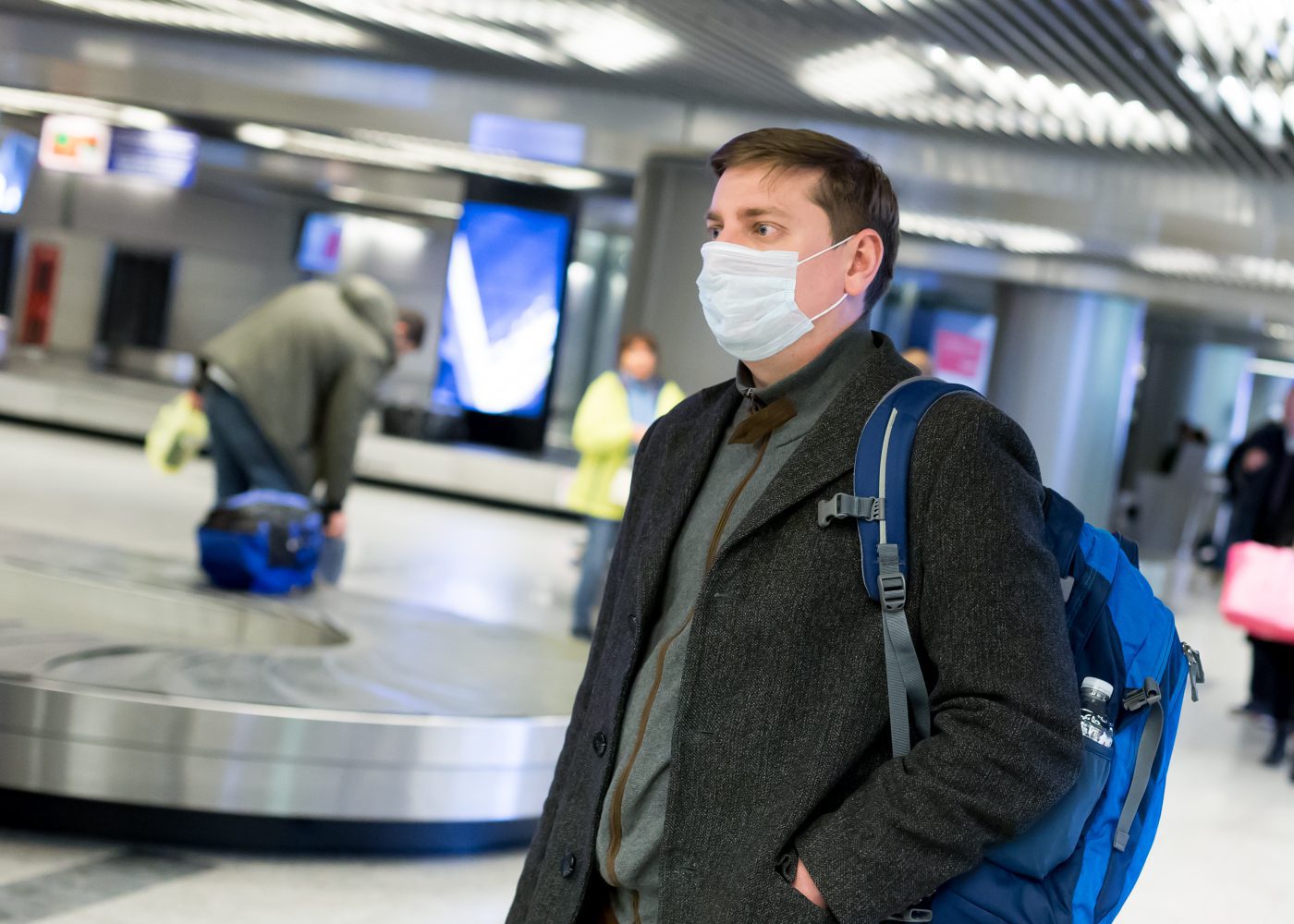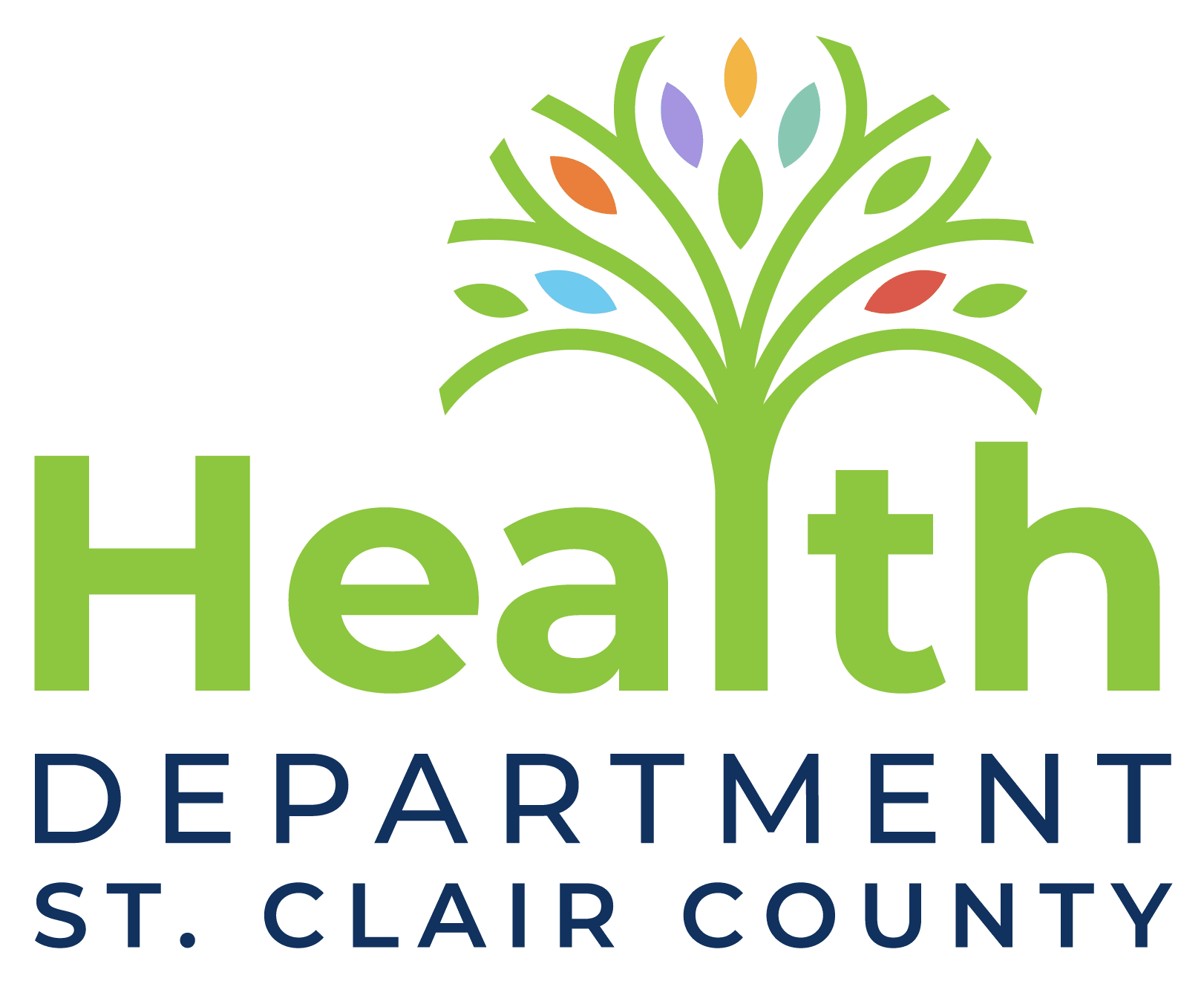Public Health Threats
Pandemic Illness
A pandemic illness spreads throughout the community whose population has little or no immunity. This is a serious incident as the illness spreads easily to a wide range of people and will seriously impact the community. The risks involved in the rapid spread of illness are that the health care system would be overwhelmed, medical supplies will likely be inadequate and that economies would suffer from the lost output of sick workers. While seasonal flu strikes annually, a pandemic is a rare and significant occurrence.
Foodborne Illness
Staff from the Department of Public Health work together with organizations throughout our community to prevent foodborne outbreaks before they occur and to track the sources if cases are discovered. St. Clair County Health Department’s Food Service Sanitation Program is designed to protect public health through compliance with the St. Clair County Retail Food Establishment Code and the Illinois Department of Public Health Food Sanitation Code to ensure safe food handling, preparation and service through routine inspections and education. The program uses educational tools, investigations and public news releases to create an awareness of problems associated with improper food handling and poor personal hygiene. For more information, please contact the Environmental Health Division, Monday through Friday, 8:00a.m. to 4:00p.m. at (618) 233-7769 or via email at SCCHDenvironment@co.st-clair.il.us
Animal-Spread Illness
Pet ownership can provide many positive benefits, and animals are an important part of our community. However, some animals (both wild and domestic) can spread germs in a variety of ways that may make people sick. Insects, such as mosquitoes and ticks, can spread viruses and other infections by biting people and animals. Spread through the bite from an infected animal, rabies can infect the brain and nervous system of both humans and their pets. For an extensive list of zoonotic (animal-spread) diseases, please visit the Centers for Disease Control and Prevention website.
Biological Agents
Natural Disasters & Severe Weather
Emerging Infections & Diseases
BIOLOGICAL AGENTS
A bioterrorism attack involves the deliberate release of viruses, bacteria or other germs that are intended to cause illness or death in people, animals, or plants. Typically found in nature, these “agents” are categorized according to how easily they are spread or their ability to cause widespread damage to people or property.
Category “A” Biological Agents
Category “A” organisms are considered the highest risk to national security. This is determined because these agents can:
- Easily spread or transmitted from person to person
- Result in high death rates and have a high potential for major public health impact
- Cause public panic and/or social disruption
- Require special action by responders for public health preparedness
Category “A” Agents
Anthrax
Anthrax is caused by the bacterium (Bacillus anthracis). Anthrax occurs in 3 forms: cutaneous (skin), inhalation and gastrointestinal. It occurs naturally in wild and domestic mammals (especially cattle, sheep, goats, camels, antelope, and other herbivores), but it has also been used as a bioterrorism weapon for centuries. When exposed, patients have experienced fever, flu-like symptoms, a sore throat and difficulty swallowing, and sores or ulcers.
Botulism
Botulism is caused by a toxin made by the bacterium (Clostridium botulinum). Botulism appears in 5 forms: foodborne, infant, adult intestinal, iatrogenic (accidental overdose) and wound. All forms are potentially fatal, but foodborne is the biggest health risk because many people can be poisoned by eating contaminated food. Symptoms of botulism include double vision, blurred vision, drooping eyelids, slurred speech, difficulty swallowing and muscle weakness / paralysis.
Plague
Plague is caused by the bacterium (Yersinia pestis), plague occurs in 3 forms: pneumonic, bubonic, and septicemic. This bacterium is found in rodents and their fleas, so plague spreads when an infected flea bites a person or through breathing in the aerosolized bacteria transmitted from an infected person. Symptoms include fever, headache, weakness, rapidly developing pneumonia, and swollen/tender lymph glands (bubonic plague only).
Smallpox
Smallpox is caused by the variola virus. Smallpox occurs in 2 forms: variola major and variola minor. Through a successful worldwide vaccination program, the disease has been eradicated, with the last naturally occurring case in Somalia in 1977. Since routine vaccination against the disease is no longer considered necessary, there is a concern that smallpox could be used as a bioterrorism agent. The disease can be spread through direct contact with bodily fluids or through contact with contaminated objects like bedding or clothing. Symptoms include high fever, general body aches and vomiting in the initial stages, followed by a rash containing small red spots in the mouth and on the skin.
Tularemia
Tularemia is caused by the bacterium (Francisella tularensis). Tularemia is transmitted through tick or deer fly bites, handling infected animals or through inhaling / ingesting the infected bacteria. It is commonly found in rabbits, hares, and rodents, which then pass along the disease to humans, and reports of this disease have been found in all U.S. states except Hawaii. Symptoms vary upon how the bacteria enters the body, but include: sudden fever, swelling of the lymph nodes, skin ulcers, eye irritation, sore throat and difficulty breathing, headaches, or cough and chest pain.
Viral Hemorrhagic Fevers
Viral hemorrhagic fevers (Filoviruses & Arenaviruses) are a group of illnesses involving several distinct families of viruses. They all involve damage to multiple organ systems and range from mild illnesses to life-threatening diseases. Symptoms vary by type, but most often include fever, fatigue, loss of strength, and bleeding. Among the diseases in this category are Arenaviruses, Ebola virus, Lassa fever and the Marburg virus.
Natural Disasters & Severe Weather
St. Clair County is exposed to a variety of both natural and man-made hazards. Knowledge about such events provides you with an understanding of what to expect. Once you understand what to prepare for, a plan of action in pre-arranged steps can guide you and your family more safely through all types of emergencies.
Thunderstorms
Thunderstorms develop quickly and can occur with little to no warning. Heavy winds and lightning caused by storms can cause extended power outages, uprooted trees, landslides, and downed or broken utility lines. Additionally, heavy rains can cause flash floods.
Tornadoes
Tornadoes are nature’s most violent storms. Spawned from powerful thunderstorms, tornadoes can uproot trees, damage buildings, and turn harmless objects into deadly missiles. They can devastate a neighborhood in seconds. A tornado appears as a rotating, funnel-shaped cloud that extends to the ground with whirling winds that can exceed 300 miles per hour. Damage paths can be more than 1 mile wide and 50 miles long.
Earthquakes
Earthquakes are the trembling of the earth’s crust, caused by underground volcanic forces or by fracturing and shifting of the earth’s tectonic plates.
Floods
Floods can occur in low-lying areas due to rising rivers, creeks, gullies, and culverts. Floods can develop over a period of days. Flash floods can result in raging waters in just a few minutes due to heavy downpours. Flash floods carry a deadly cargo of rocks, mud, and other debris. Moving water only 6 inches deep can sweep you off your feet. Only 2 feet of water can cause a vehicle to become buoyant enough for the driver to lose control.
Extreme Heat
Extreme heat and too much exposure to the sun’s rays can cause severe short- and long-term health problems.
Winter Storms
Winter storms can immobilize an entire region with heavy snowfall and extreme cold. The results can range from isolation due to blocked roads and downed power lines to the havoc of cars and trucks sliding on icy highways.
Man-Made Disasters
Man-made disasters include hazardous material incidents (fixed or mobile facilities), plane crashes, train derailments, major highway accidents, terrorism, or nuclear incidents.
Power Outages
Power outages can occur at any time and can pose serious problems, particularly for those using life-sustaining equipment.
Fire
In the U.S., most fire deaths occur in residences, with billions of dollars in property loss each year. Make sure you and your family are aware of ways to keep yourselves and your home safe. Being aware and prepared can help prevent fires as well as save your life and minimize property damage in the event of a fire.
Radiological Accidents
In the event of a radiological accident at any of the nuclear power stations in Illinois or any incident involving the actual or potential release of radiation to the environment, IEMA will activate the Illinois Plan for Radiological Accidents (IPRA).
Terrorism
The best way for Illinois residents to prepare for a terrorist event is to be informed, aware, and ready to face a variety of threats. Even though it has been several years since the tragedies of Sept. 11, 2001, the threat of a terrorist event is ever-present. If you see something suspicious or if something just does not seem right, notify the authorities by calling 9-1-1. The video, 7 Signs of Terrorism, illustrates seven signs to be aware of if you suspect a terrorism plot is being planned or under way. The video can help citizens become active participants in maintaining our homeland security.
EMERGING INFECTIONS & DISEASES
With the expanded global marketplace, people visit new locations, and our products are developed in places we never would have considered years ago. With this expansion and focus on worldwide prosperity and interaction, advanced surveillance systems have been developed to protect against infectious diseases spreading and threatening public health.


Below are just a few of the many emerging diseases that public health professionals address:
